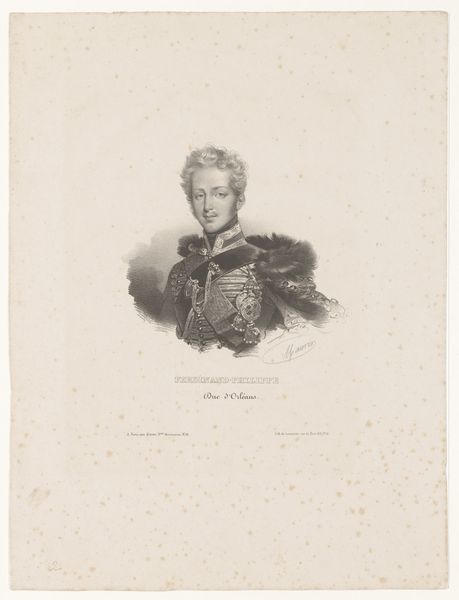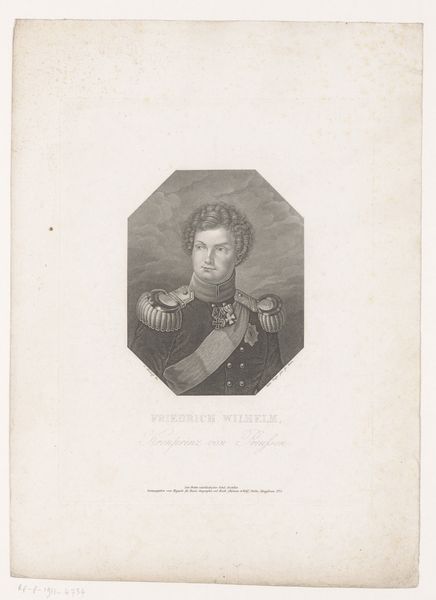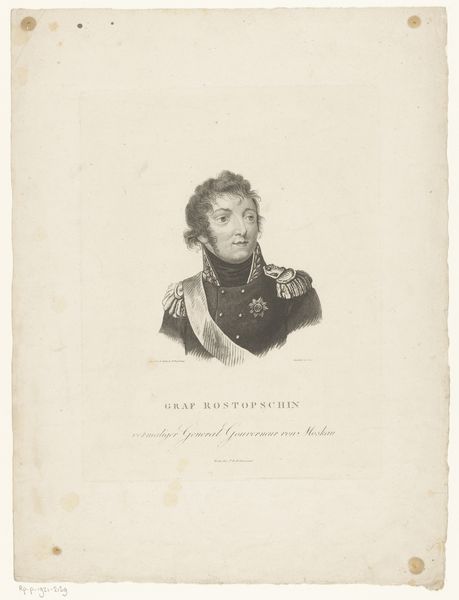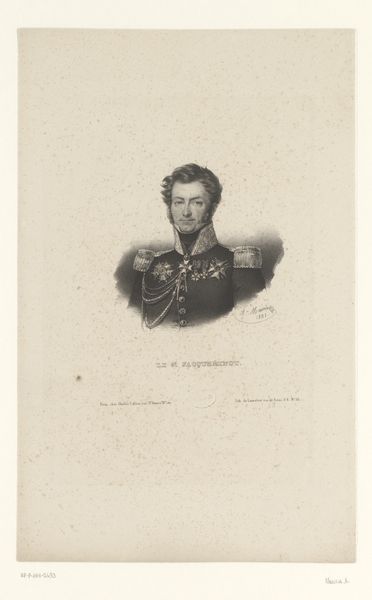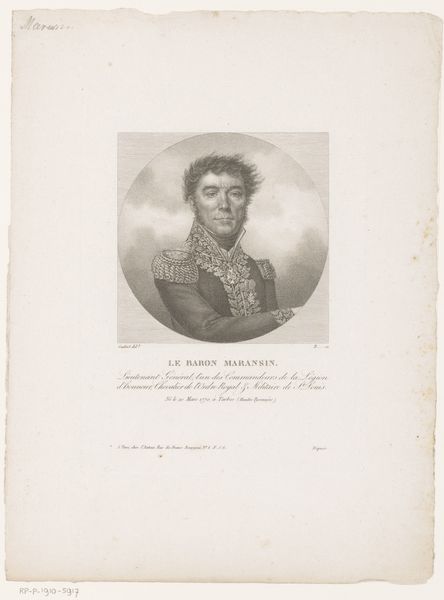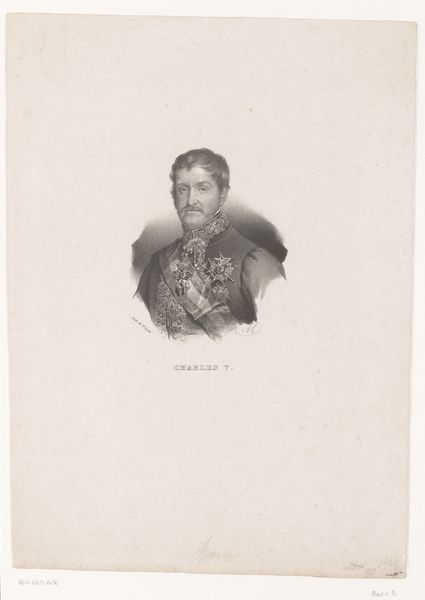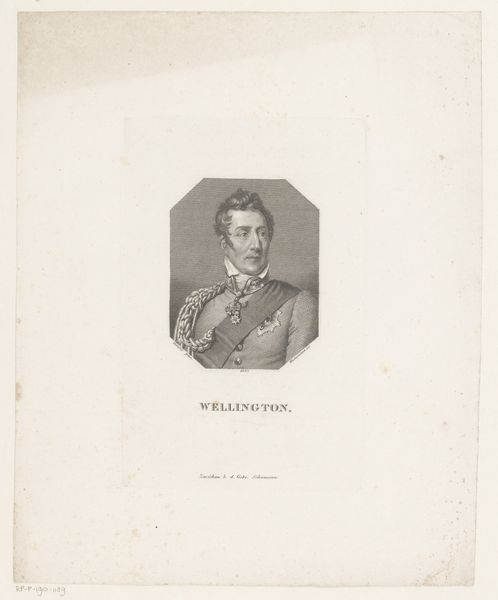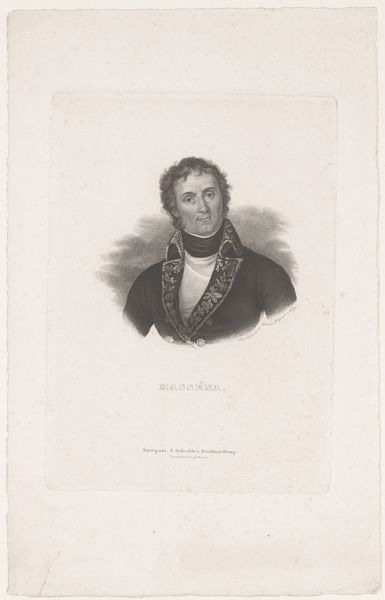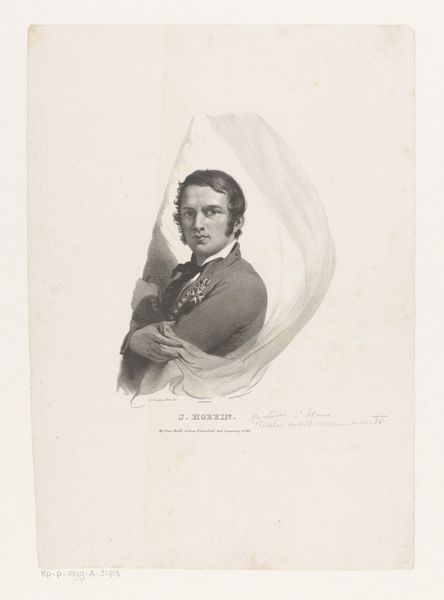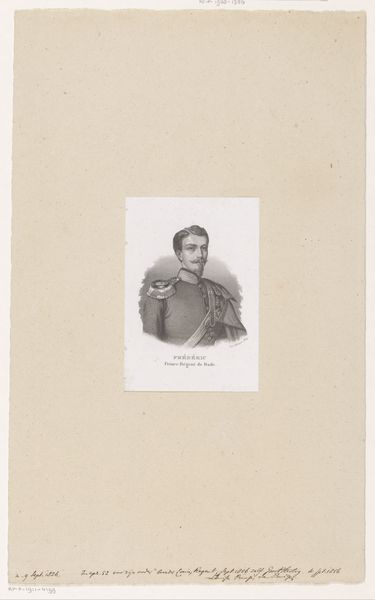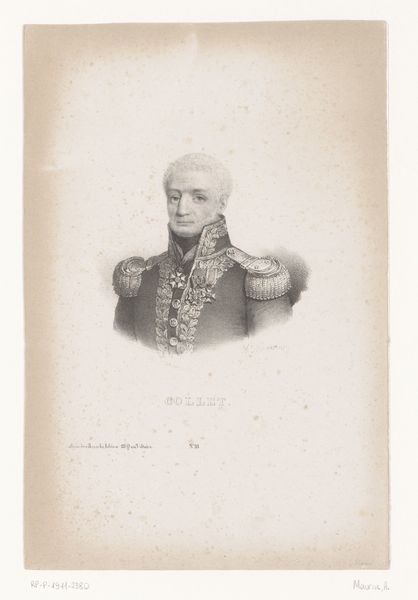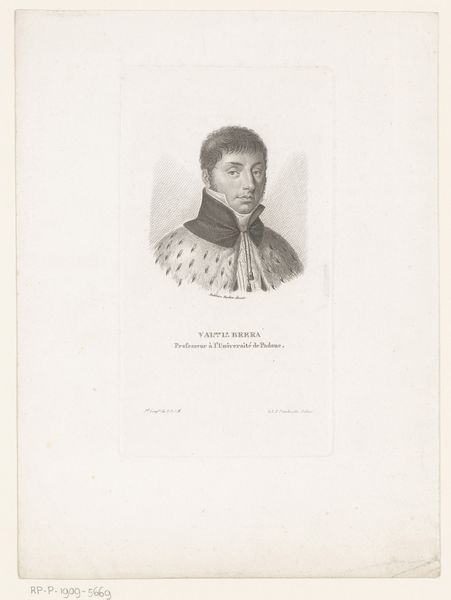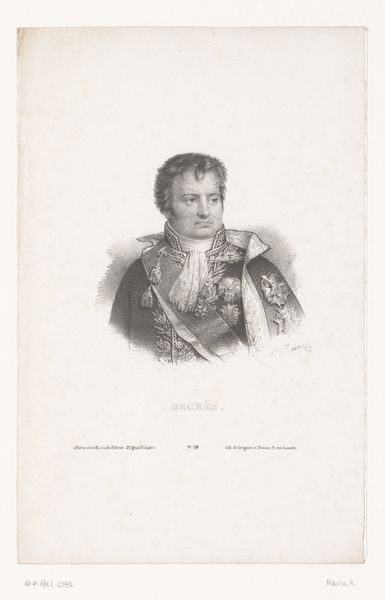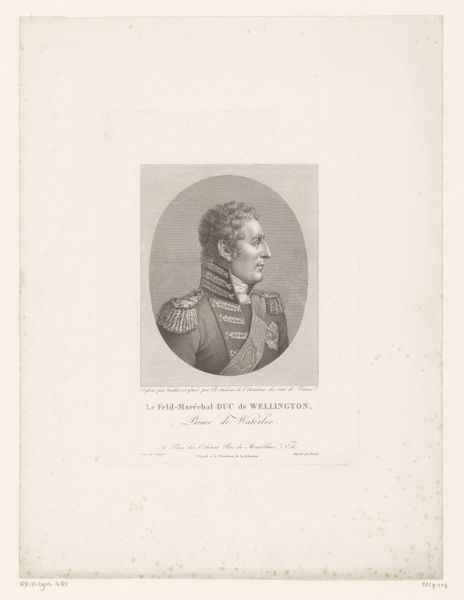
Portret van Nicolas Jean-de-Dieu Soult, hertog van Dalmatië 1831 - 1838
0:00
0:00
antoinemaurin
Rijksmuseum
drawing, print, pencil, graphite
#
portrait
#
pencil drawn
#
drawing
#
neoclacissism
# print
#
pencil sketch
#
pencil drawing
#
pencil
#
graphite
Dimensions: height 343 mm, width 258 mm
Copyright: Rijks Museum: Open Domain
Editor: This is "Portret van Nicolas Jean-de-Dieu Soult, hertog van Dalmatië" by Antoine Maurin, made between 1831 and 1838. It’s a graphite drawing and print. I’m struck by how precise and detailed it is, especially considering it's primarily pencil. What strikes you about this portrait? Curator: Considering this work, it's critical to analyze the production process. The image began as a drawing but became a print, suggesting wider dissemination and, consequently, broader consumption. Who was meant to see this image, and why? The transition from unique artwork to mass-produced print tells us a lot about the intentions behind its creation and circulation. Editor: So, it's less about artistic expression and more about distribution and consumption? How does that change our view of the work itself? Curator: Exactly! The labor involved is significant. Consider the skills of the draughtsman and the printer; each contributing specialized knowledge. Think about how these processes, and their inherent class divisions, played into the portrait's function of legitimizing Soult's status during a period of political upheaval. The materiality speaks volumes; graphite mined and processed, paper pulped and pressed – it's all tied to broader economic structures. Editor: I never thought about a portrait in terms of production and labor. It really contextualizes it differently. Does the Neoclassical style tie into these material concerns as well? Curator: Absolutely. The crisp lines and emphasis on clarity evident in Neoclassicism weren’t merely aesthetic choices; they mirrored Enlightenment ideals of order and reason, also reflected in the systematization of production itself. The means of producing this image are inextricable from its message. Editor: I’m beginning to see how analyzing the material aspects and the methods of production opens up a new perspective on understanding even something as traditional as a portrait. Curator: Indeed. Examining art through this lens allows us to unpack the social, political, and economic conditions that shaped its creation and reception, pushing beyond just aesthetic appreciation.
Comments
No comments
Be the first to comment and join the conversation on the ultimate creative platform.
